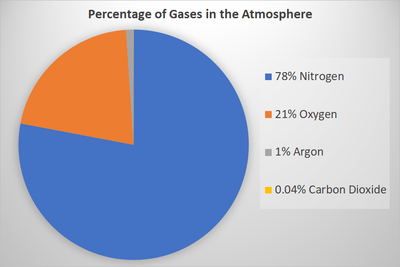Difference between revisions of "Photosynthesis"
(→Photosynthesis and the Atmosphere) |
(→Photosynthesis and the Atmosphere) |
||
| Line 72: | Line 72: | ||
| style="height:20px; width:200px; text-align:center;" |This [[diagram]] shows [[Carbon Cycle]] which shows how [[photosynthesis]] takes [[Carbon Dioxide]] out of the [[atmosphere]]. | | style="height:20px; width:200px; text-align:center;" |This [[diagram]] shows [[Carbon Cycle]] which shows how [[photosynthesis]] takes [[Carbon Dioxide]] out of the [[atmosphere]]. | ||
|} | |} | ||
| + | |||
| + | Most [[Oxygen]] on Earth is made by [[algae]] '''photosynthesising''' in the oceans. | ||
Revision as of 09:37, 20 September 2018
Contents
Key Stage 1
Meaning
Photosynthesis is how plants make their own food.
Key Stage 2
Meaning
Photosynthesis is a process that plants use make their own food using the sunlight.
About Photosynthesis
- Photosynthesis is what makes plants producers as they are able to make their own food.
- Without sunlight plants cannot do photosynthesis.
- Plants cannot survive for very long without sunlight or they will run out of food.
Key Stage 3
Meaning
Photosynthesis is the process that takes place in the chloroplasts in cells which uses Carbon Dioxide and Water to produce Glucose and Oxygen using the energy transferred to the organism by sunlight.
Word Equation
| The word equation for photosynthesis showing Carbon Dioxide and Water reacting together in the presence of light to produce Glucose and Oxygen. |
Symbol Equation
| The balanced symbol equation for photosynthesis showing 6 Carbon Dioxide and 6 Water molecules reacting together in the presence of light to produce 1 Glucose and 6 Oxygen molecules. |
About Photosynthesis
- Photosynthesis takes place in the chloroplast.
- Chlorophyll is a catalyst for photosynthesis.
- Without chlorophyll, photosynthesis cannot happen.
Adaptations for Photosynthesis
- Plants have evolved an organ called a leaf which is specially adapted for photosynthesis.
- Leaves are thin and wide to create a large surface area to collect light.
- The leaf has Xylem vessels to supply water collected by the roots.
- The leaf has air gaps to allow carbon dioxide and oxygen to flow through the leaf.
- The leaf has a layer of palisade cells which have lots of chloroplasts inside for photosynthesis.
- The leaf has guard cells and stomata which can open and close. This way if the leaf gets dehydrated the stomata will close and stop carbon dioxide getting in, stopping photosynthesis.
Factors Affecting Photosynthesis
- Light - The more light, the faster photosynthesis can happen.
- Water - Photosynthesis needs water. If there is not enough water photosynthesis will slow down.
- Temperature - Photosynthesis works best at 30°C. Too much colder or too much warmer and photosynthesis will slow down.
- Carbon Dioxide - Photosynthesis needs Carbon Dioxide. The more Carbon Dioxide, the quicker photosynthesis can happen.
Photosynthesis and the Atmosphere
Photosynthesis removes Carbon Dioxide from the atmosphere and adds oxygen to the atmosphere. The atmosphere usually has these concentrations of gases:
All living creatures respire and produce Carbon Dioxide. If there was no photosynthesis the amount of Carbon Dioxide in the atmosphere would increase and the amount of Oxygen in the atmosphere would decrease. Before humans started burning fossil fuels photosynthesis and respiration kept the amount of Carbon Dioxide in the atmosphere constant but now that we burn fossil fuels the amount of Carbon Dioxide is increasing.
| This diagram shows Carbon Cycle which shows how photosynthesis takes Carbon Dioxide out of the atmosphere. |
Most Oxygen on Earth is made by algae photosynthesising in the oceans.




